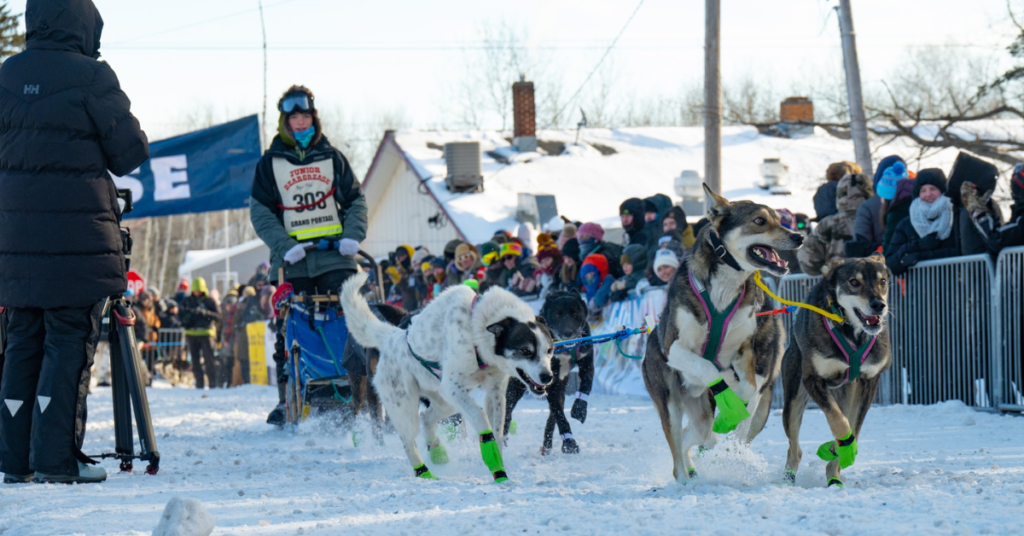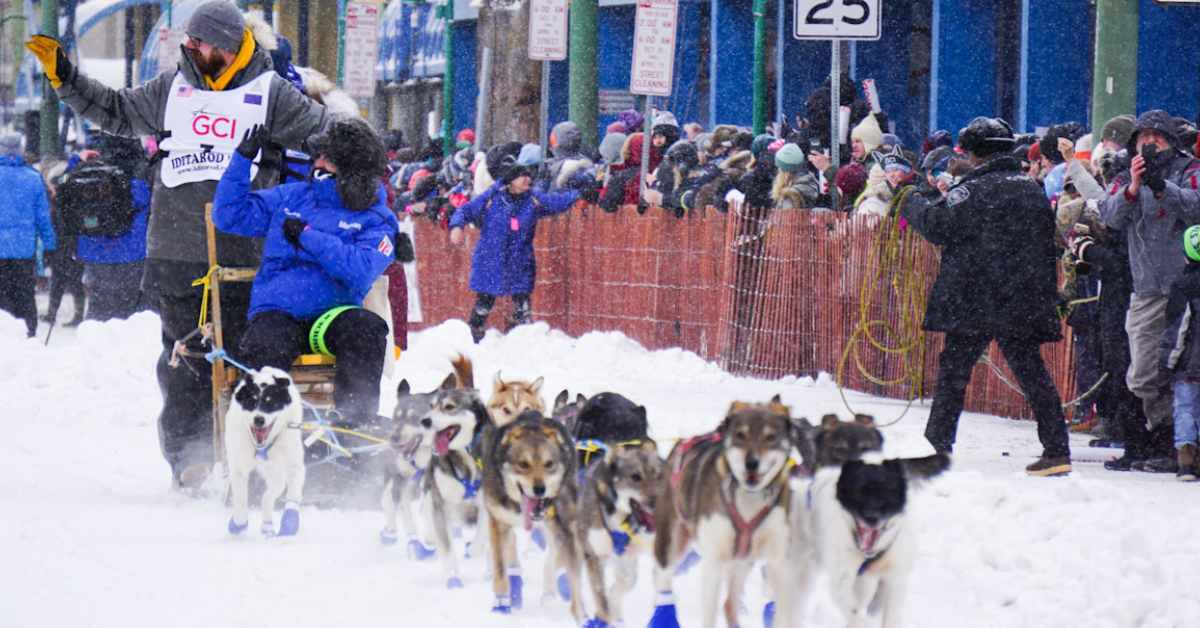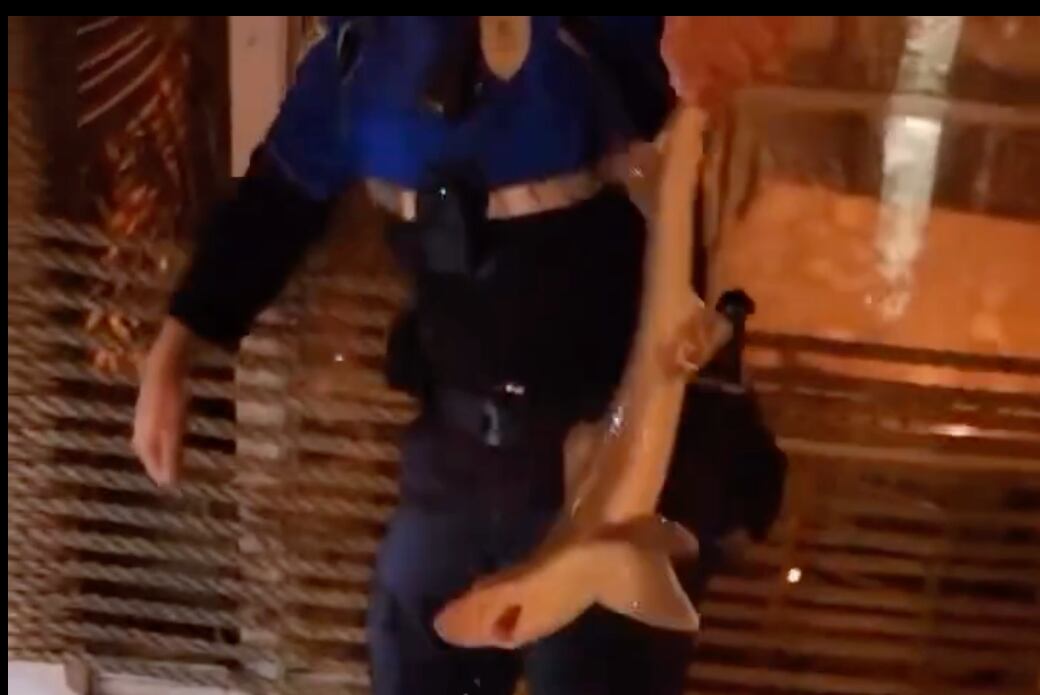Sled dog racing has long been a beloved winter tradition, blending endurance, skill, and teamwork between mushers and their athletic canine partners. While often associated with the far north, this exhilarating sport has found a dedicated following in north central Wisconsin, where a passionate community keeps the tradition alive.
From small, family-friendly events to high-level competitions, sled dog racing brings together individuals from all walks of life, united by their love for the sport and the unbreakable bond between musher and dog. A key player in sustaining this tradition is the Wisconsin Trailblazers Snowmobile Club, which has been fostering the sled dog racing scene for nearly five decades.
A Year-Round Commitment to the Sport
Dan Bocock, president of the Wisconsin Trailblazers Snowmobile Club, emphasizes that sled dog racing is more than just a winter activity; it’s a year-round commitment requiring extensive training, conditioning, and dedication. Bocock, who resides in the Burlington area, trains and cares for 12 dogs, ensuring they are prepared for the competitive racing season.
“I truly love the competitiveness, but even more than that, I love to see the excitement in the dogs,” Bocock said in an interview with WPR’s Shereen Siewert. “Seeing how eager they are to get out and run, to be out on the trail—it’s rewarding to witness what you and your dogs have worked so hard to achieve.”
Wisconsin Trailblazers: A Hub for Sled Dog Racing
For nearly 50 years, the Wisconsin Trailblazers Snowmobile Club has been instrumental in growing the sled dog racing community. Through well-organized races, the club provides a platform for both experienced competitors and newcomers to immerse themselves in the sport. Upcoming races are set to take place in Rhinelander and at Willow Springs Round Barn near Wausau, drawing excitement from mushers and spectators alike.
The Thrill of the Race: Mushers’ Perspectives
Bocock vividly recalls his first sled dog racing experience, which was in dryland racing—a variation of the sport that doesn’t require snow. Instead, mushers compete in events like canicross (running behind the dog) or riding a bike or scooter pulled by the dog.

“It can be humbling and sometimes painful,” Bocock said. “Especially in canicross, where the dog is pulling you with all their might, and you’re just trying to keep up.”
What Makes a Great Sled Dog?
Not every dog is cut out for sled racing. Bocock highlights several key traits that make an exceptional sled dog:
- Stubbornness – A strong-minded dog can make a great leader.
- Physical Structure – Balance, body composition, and endurance are crucial.
- Composure and Focus – The ability to follow commands and resist distractions like passing animals or birds.
- Early Training – Puppies start training young, and their potential as leaders or pack members becomes clear early on.
The Unique Bond Between Mushers and Their Dogs
For mushers, sled dogs are more than just athletes—they are family. While some mushers house their dogs in kennels or fenced-in outdoor spaces, others, like Bocock, keep them as indoor pets. The bond between musher and dog is essential for success on the trail.
Training for Success
Training sled dogs isn’t just about running on snow. Since Wisconsin’s weather conditions vary, mushers follow a rigorous regimen:
- Dryland Training – Running on dirt trails when there’s no snow.
- Temperature Monitoring – Training starts when temperatures drop below 50 to 55 degrees Fahrenheit.
- Gradual Mileage Increase – Building endurance throughout the season to match race distances.
- Four-Day Training Cycle – Balancing on-trail workouts between weekdays and weekends.
Challenges of Sled Dog Racing
Competitive sled dog racing presents numerous challenges. Some of the most common difficulties include:
- Passing Other Teams – A six-dog team overtaking another on a narrow trail requires careful coordination.
- Unpredictable Weather – Races often get canceled due to lack of snow, rainstorms, or extreme temperatures.
- Months of Preparation – After training for months, a race cancellation can be frustrating for mushers and their teams.
Ensuring Animal Welfare in the Sport
Animal welfare is a top priority in sled dog racing. According to Bocock, mushers take extensive measures to ensure their dogs are healthy cared for:
- Proper Nutrition – Feeding high-quality food to maintain strength and endurance.
- Clean and Comfortable Living Conditions – Providing spacious kennels and clean resting areas.
- Strict Welfare Standards – Competitive events enforce high standards of care to guarantee the well-being of all dogs.
“The dogs absolutely love to run,” Bocock reassures. “When spectators see their enthusiasm, they understand how much these dogs enjoy the sport.”
A Thrilling Experience for Spectators
Watching a sledge dog race is an unforgettable experience. When hundreds of eager sled dogs start barking and howling in anticipation, the energy is electric.
“The noise is incredible,” Bocock describes. “People can’t believe how loud and exciting it is when the teams line up.”
Traditional sledge dog breeds, like Siberian Huskies, often draw the most attention, as their striking appearance and history in the sport make them fan favourites. Whether it’s a successful run or a challenging race, the joy of the sport remains at the heart of every event.
Disclaimer: This article has been meticulously fact-checked by our team to ensure accuracy and uphold transparency. We strive to deliver trustworthy and dependable content to our readers.








